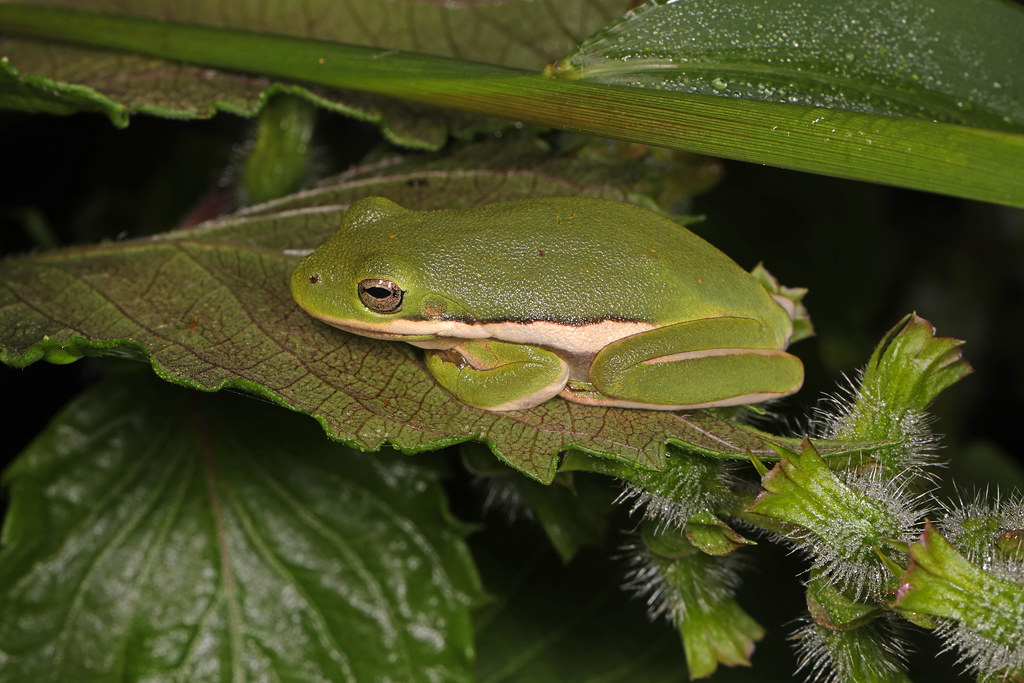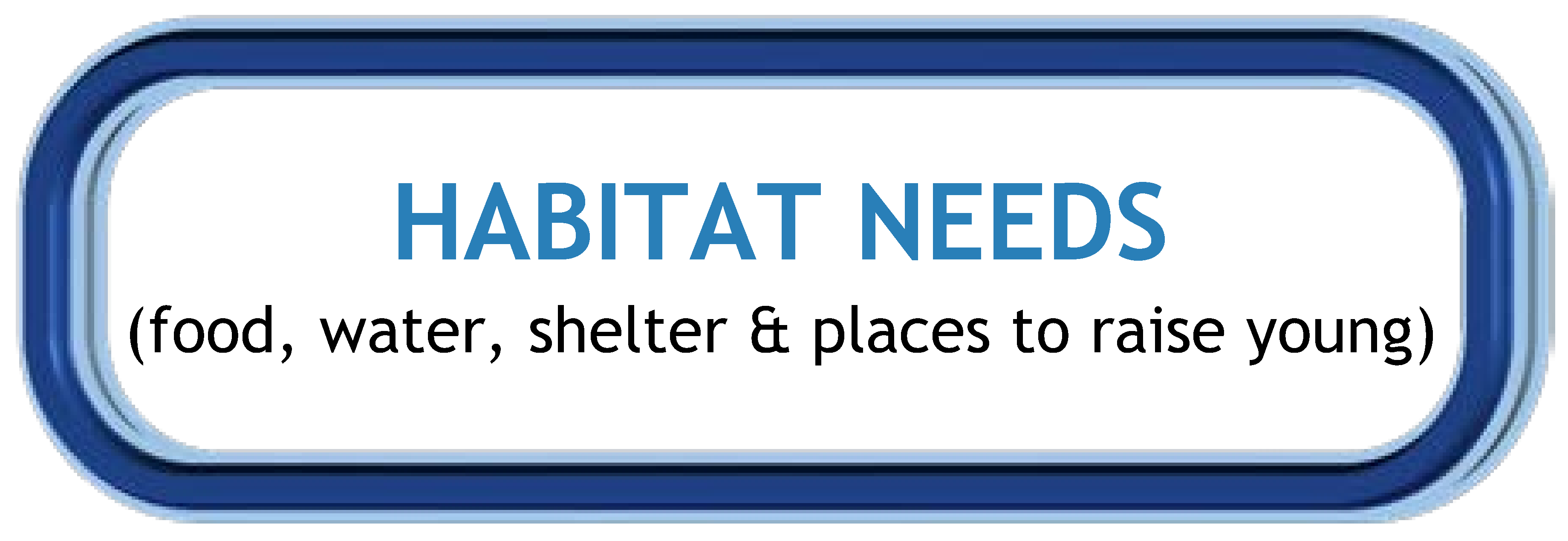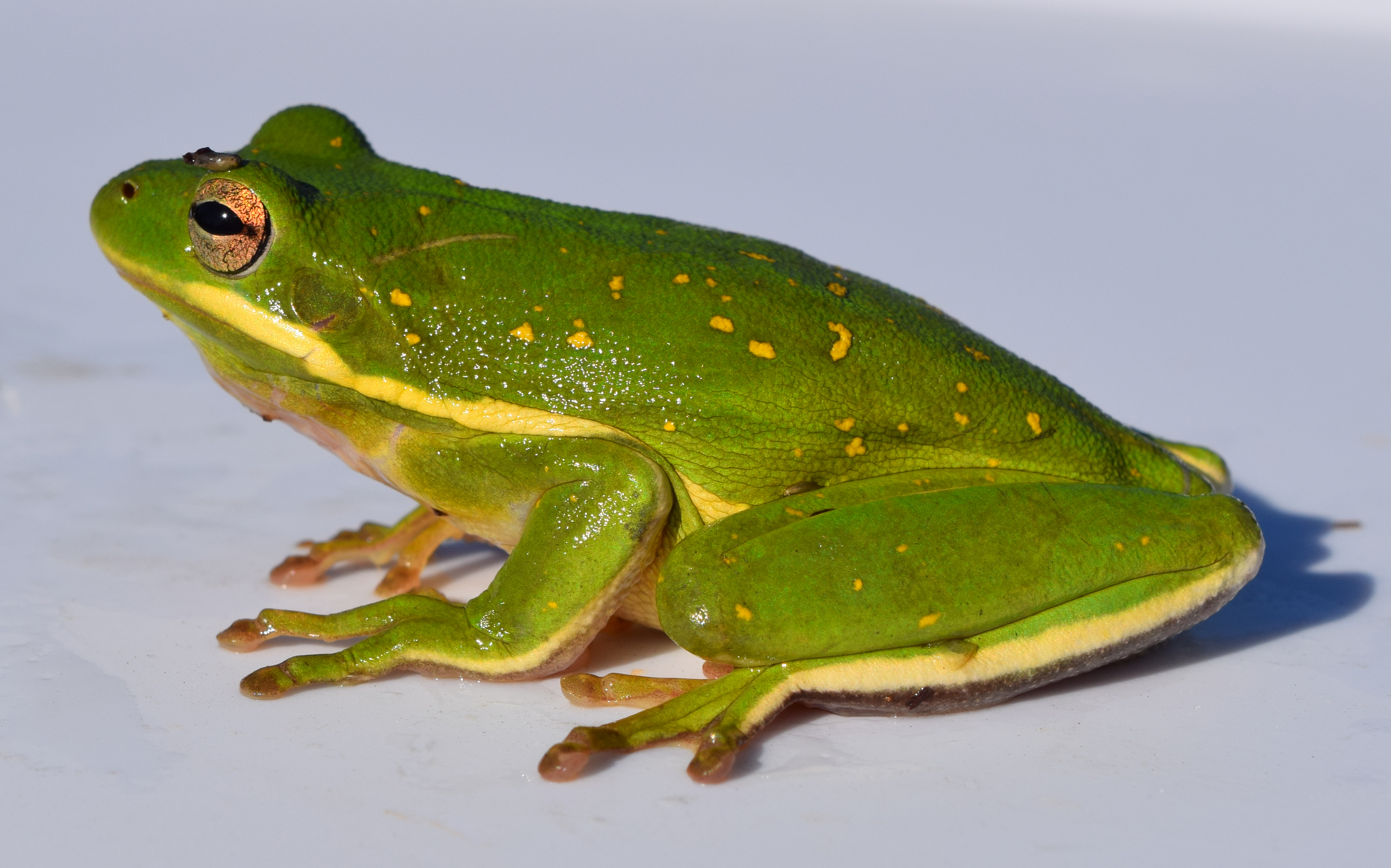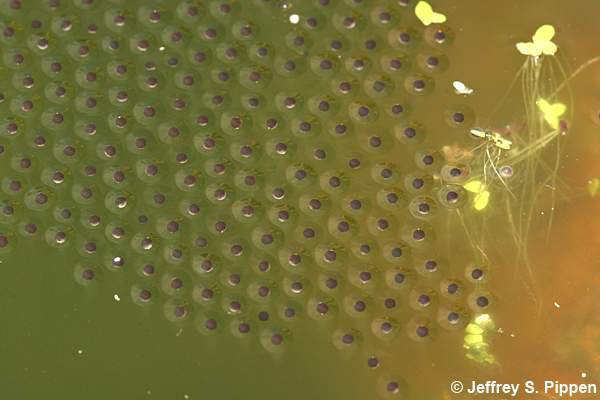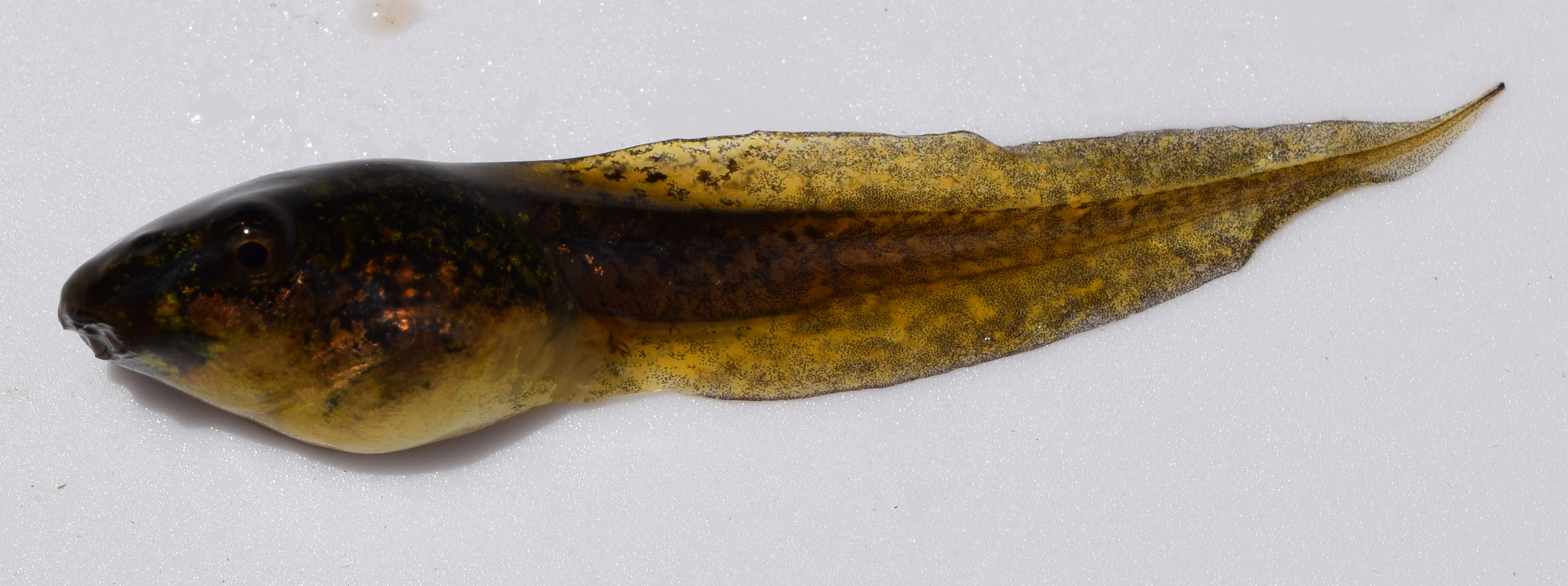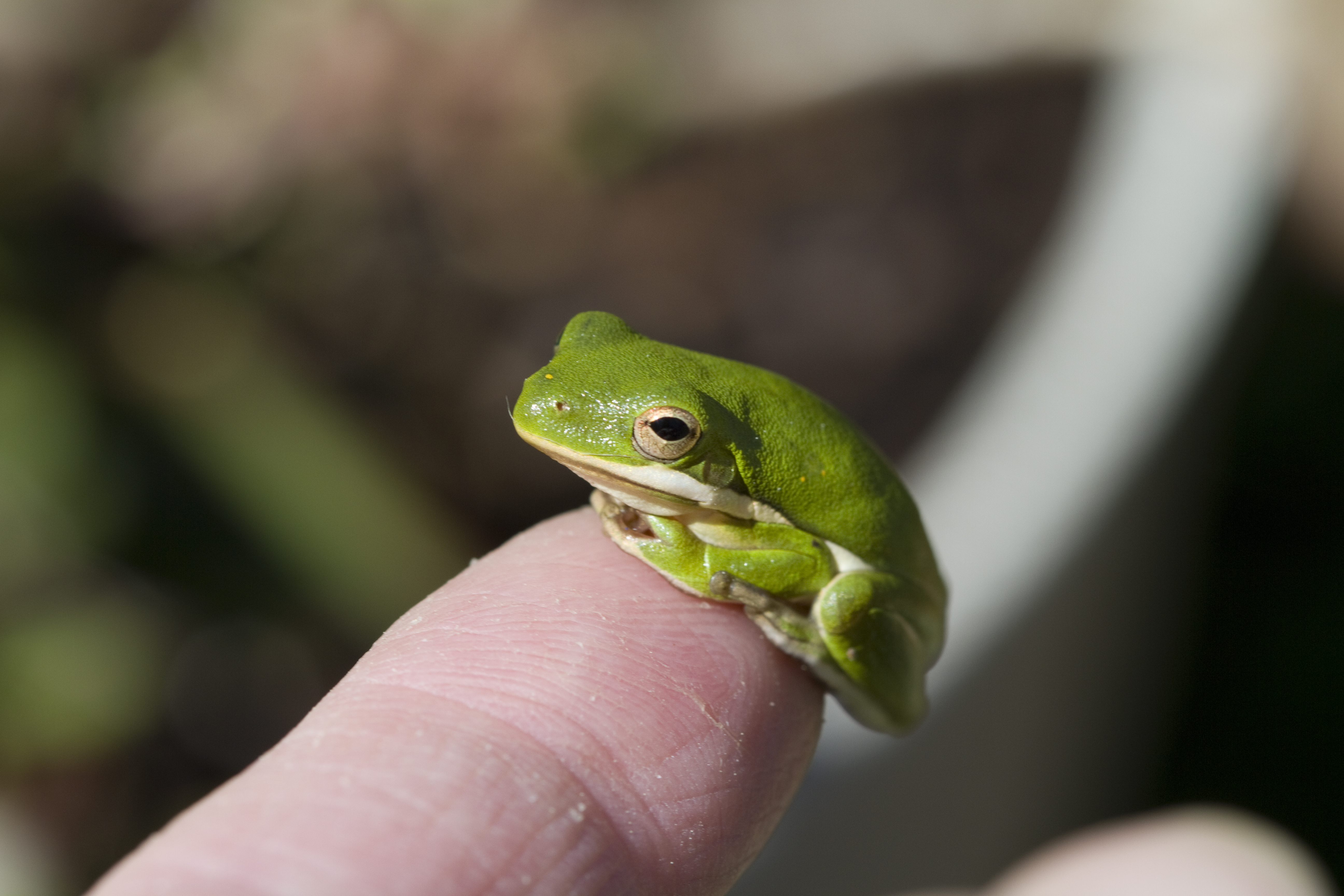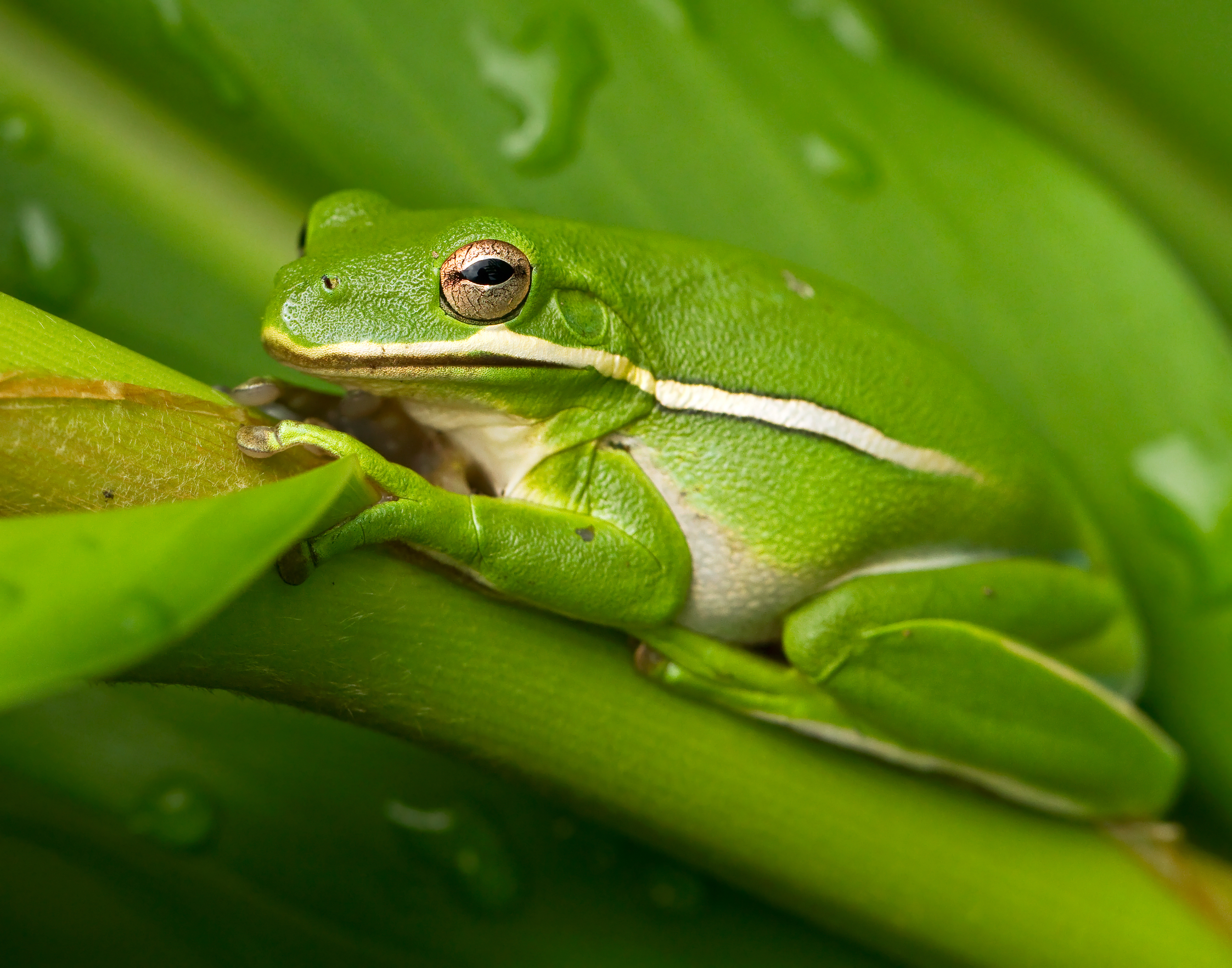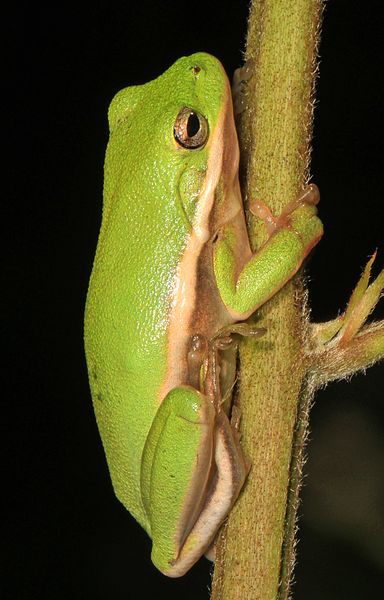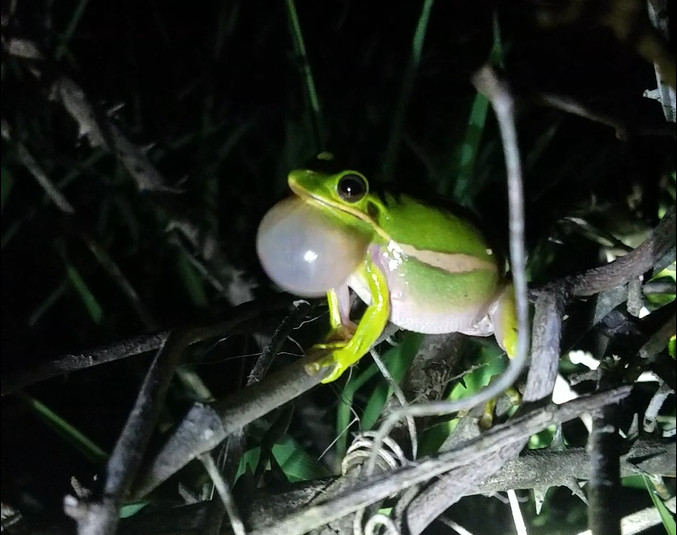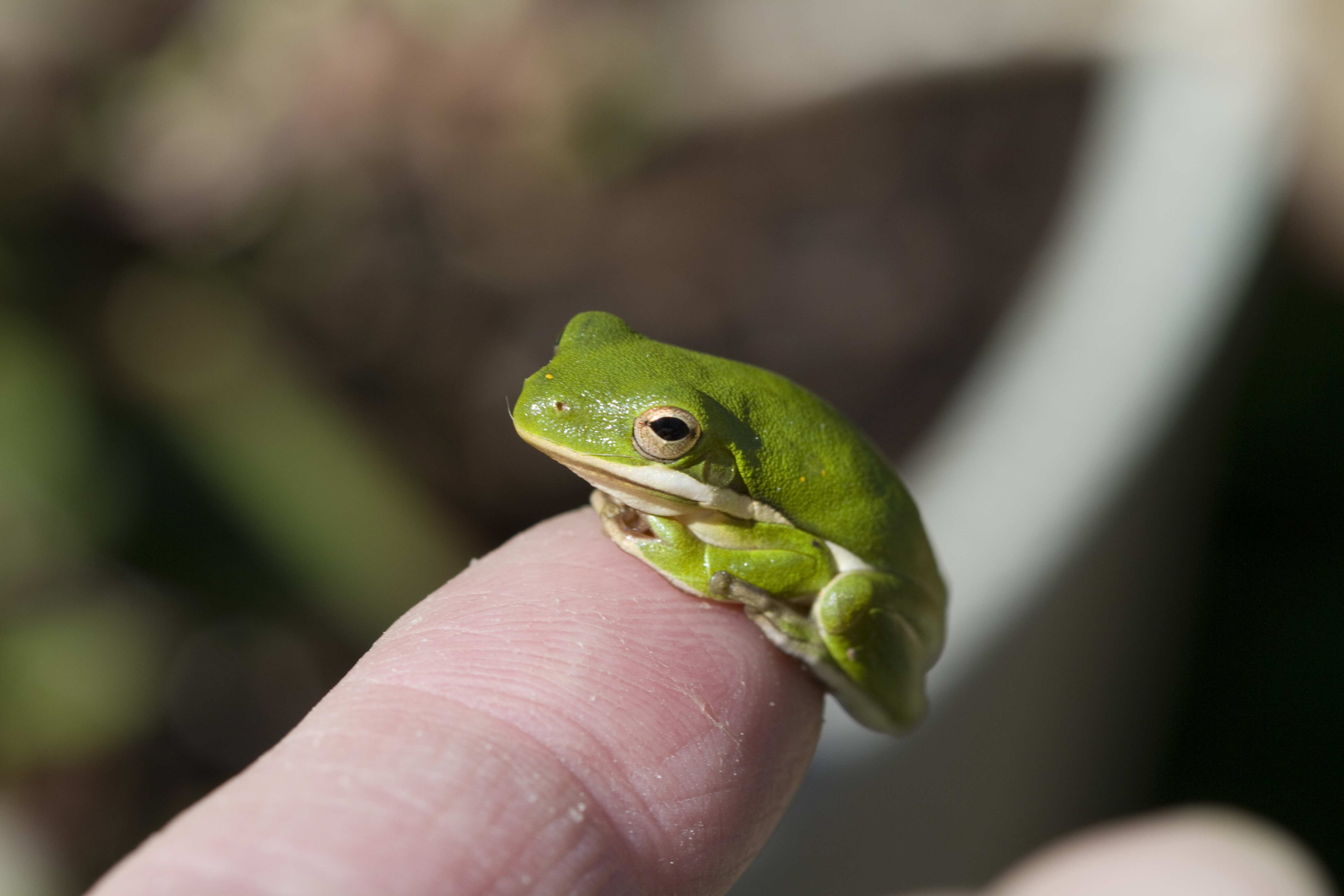Wonders of Wildlife: Green Tree Frog
Green Tree Frog Other Common Names: Rain Frog, Cowbell Frog Scientific Name: Hyla cinerea Found in Alabama: Common statewide Diet: Herbivore (eats plants) as tadpoles Carnivore (eats animals) as adults |
Green Tree Frog
flickr - Judy Gallagher
Click image to enlarge it |
| CLASSIFICATION | ||
|
What type of animal am I?
|
|
|
| The Green Tree Frog is an AMPHIBIAN! | ||
| IDENTIFICATION TIPS | ||
Green Tree Frog
Wikimedia - Fredlyfish4 Click image to enlarge it |
ADULT GREEN TREE FROG | |
|
||
|
EGGS
|
TADPOLES (Larvae)
|
FROGLETS
|
| Soft-shelled eggs arranged in clusters attached to aquatic vegetation |
Range from 4.5-5.5 mm and grow until they are around 60 mm | As small as a tadpole up to as large as an adult; still has a tail but lives on land |
|
Green Tree Frog Tadpole Wikimedia - Fredlyfish4 Click image to enlarge it |
||
| Cope's Gray Tree Frog Eggs Jeff Pippen Click image to enlarge it |
Green Tree Frog Froglet Dreamstime Click image to enlarge it |
|
| ADAPTATIONS | |
| PHYSICAL ADAPTATIONS | |
| Green Tree frogs avoid predators: | |
|
Green Tree Frog Camouflage and Toe Pads
Dreamstime Click image to enlarge it |
| Green tree frogs have specialized adaptations for hearing: | |
|
Green Tree Frog Typanum Flickr - Cotinis Click image to enlarge it |
|
|
| Green tree frogs have specialized toes: | |
|
Green Tree Frog Climbing
Wikimedia - Judy Gallagher Click image to enlarge it |
| Green tree frogs have tongues that help them capture prey: | |
|
|
| Green tree frogs have teeth to hold their prey in their mouths: | |
|
|
| BEHAVIORAL ADAPTATIONS | |
| Green tree frogs are nocturnal: | |
|
|
| Green tree frogs communicate with one another: | |
|
Green Tree Frog Calling
Tyler Burgener Click image to enlarge it |
| LIFE CYCLE | ||||
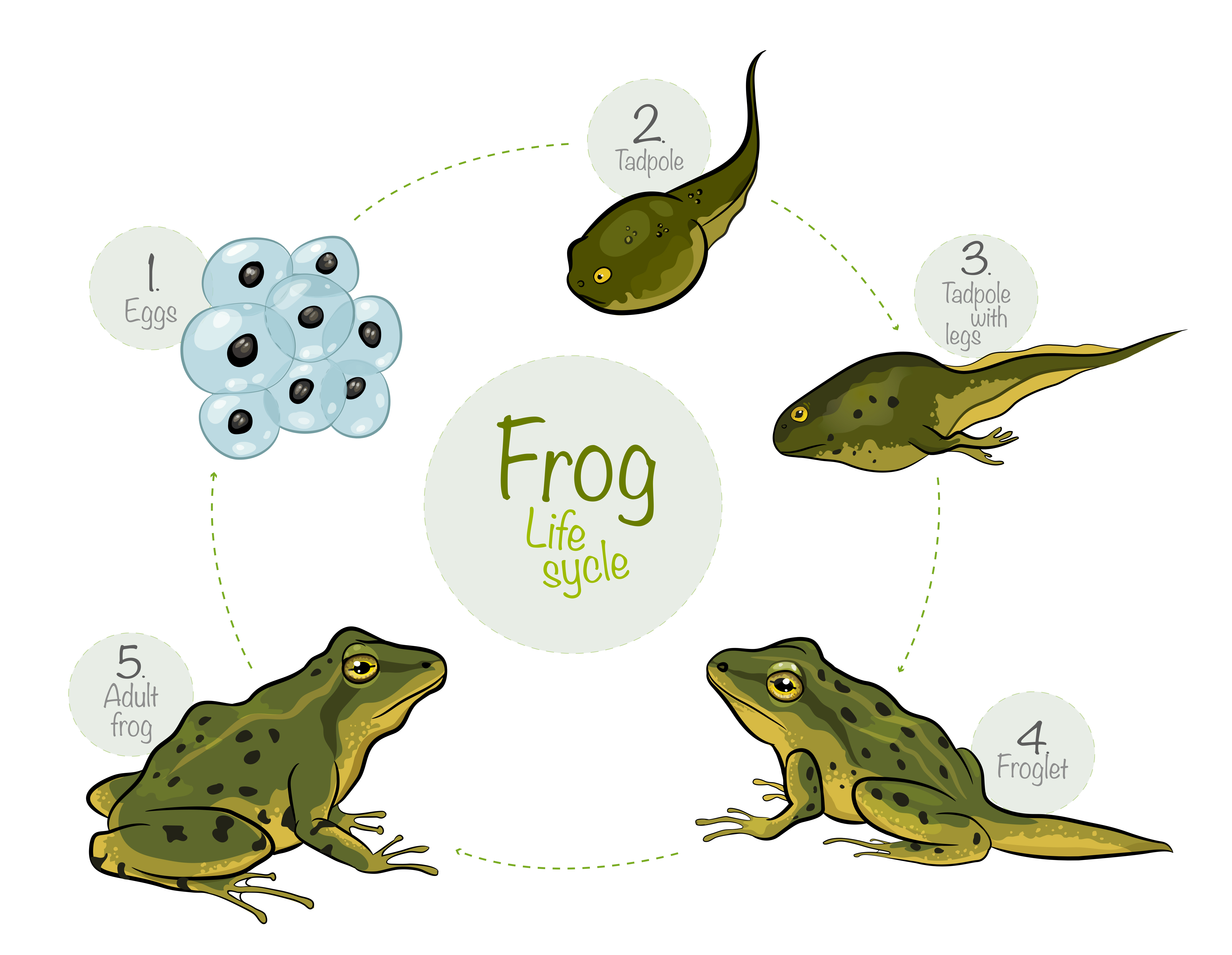 Frog Life Cycle
Wikimedia - Derek Ramsey Click image to enlarge it |
|
|||
| Four Life Cycle Stages of the Green Tree Frog | ||||
| 1. Egg: |
|
|||
| 2. Tadpole: |
|
Green Tree Frog Tadpole
Wikimedia - Fredlyfish4 Click image to enlarge it |
||
| 3. Froglet: |
|
Green Tree Frog Froglet
Dreamstime Click image to enlarge it |
||
| 4. Adult: |
|
|||
| Life Span: |
|
|||
| NATURAL Habitat Needs |
ADULTS | YOUNG |
| Food |
|
|
| Water |
|
|
| Shelter |
|
|
| Places to Raise Young |
|
| BACKYARD Habitat Needs |
ADULTS | YOUNG |
| Food |
|
|
| Water |
|
|
| Shelter |
|
|
| Places to Raise Young |
|
|
| ECOLOGICAL ROLE | |
| Animals play an important ecological role in the health of habitats and ecosystems. | |
Food Source: |
|
Population Control: |
|
Indicator Species: |
|
INFORMATION SOURCES FOR THIS SPECIES
 |
 |
|
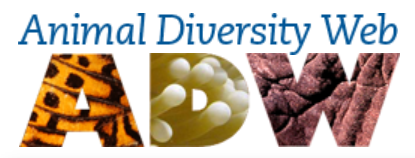 |
||
|
|
|
|
 |
||
 Wildlife Tag
Wildlife Tag
